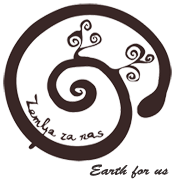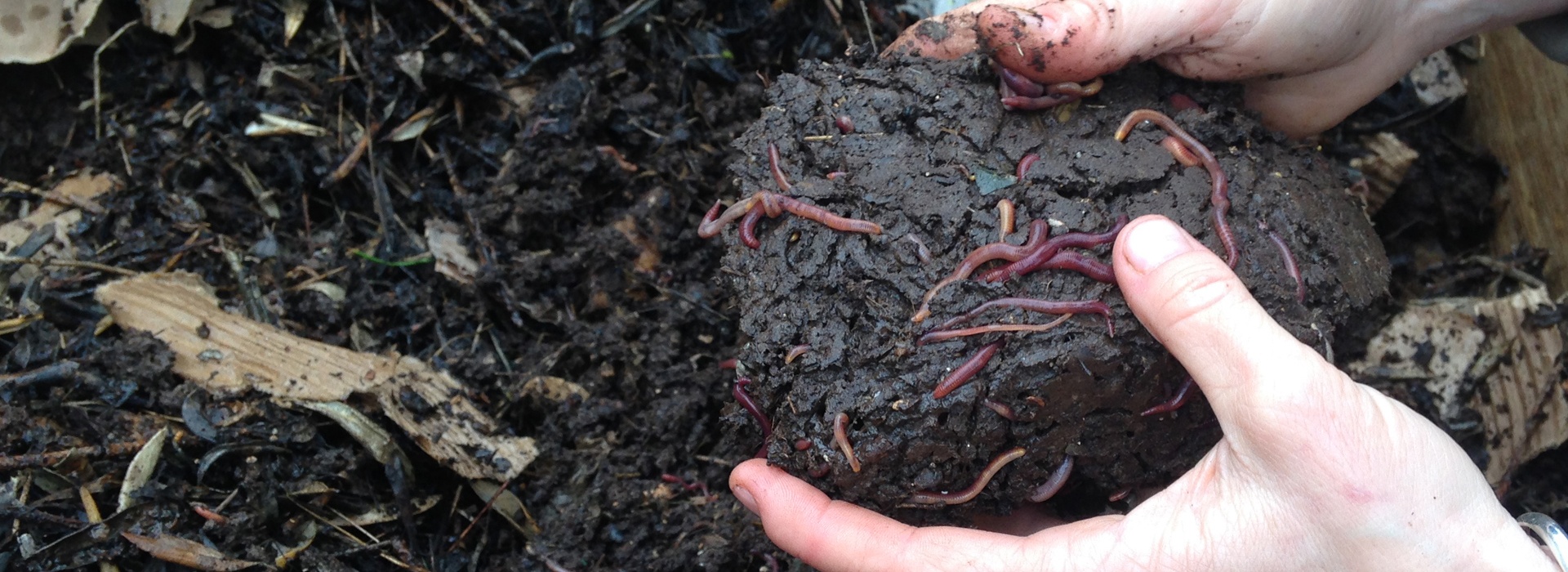Egyptian queen Cleopatra proclaimed them saints. Aristotle called them the intestines of the earth. Charles Darwin considered they have a significant role in the development of the world. What was the animal that deserved such admiration from these famous people? Just an ordinary eartworm.
As you will see, the eartworms truly deserve to be admired. Sure, they are slimy and they wriggle. But, even those properties that seem repulsive at first, may evoke the admiration in us, especially after we learn a little bit more about these animals. All you really have to do is bend down, dig away a thin layer of earth or leaves and you’ll enter the wonderful world of earthworms.
Earthworms are like real little tillers that sweep the surface of the earth. Munching their way through manure, soil, and decaying vegetation, they produce huge amounts of humus.
Scientists have found that the digestive system of earthworms transform the nutrients into such form that plants can absorb, thanks to which its waste materials are abound with the nutritive elements for plants. Additionally, many harmful microorganisms living in manure and decaying vegetation are destroyed in the intestinal tract of earthworms. In such way, the earthworms clean the soil as they eat. They are a perfect recycling machine – they feed on waste and use it to produce foods rich in nutrients.
Earthoworms are our friends, tiny alchemists who turn our waste into black gold, into the humus of the highest quality that our plants simply adore.
Here are some more useful information about these wonderful creatures.
A strange form of friendship that everyone has benefits from
Nowadays, with a modern way of life, human being creates bio-waste every day, which represents a problem, if it is not used. This is where red ‚californian‘ earthworms gladly jump in as a perfect solution, because much of our waste is their food. The humus that they produce is the perfect food for plants, which are perfect food for humans, who in most cases pay somebody else to take care of their bio-waste.
Recycling, this contemporary word, which previously did not even needed to exist, means a lot today. Anyone who has „the earthworms“ can proudly say they are recycling, because the earthworms resolve up to 70% of the kitchen waste without any trouble. This saves money because a lot less of bio-waste ends up in a trash bin, meaning smaller costs. It also helps reduce the accumulation of waste on garbage disposal dumps and makes this planet a bit more beautiful.
Vermicompost (composting process, end-product – vermicast; humus made by californian earhworms)
In the developed countries, it is known as the black gold, due to the same value in their market as gold, and also because of the amazing effect it has when placed around the roots of any plant. It is entirely unnecessary to discuss which fertilizer is the best for your garden (horse, cow, sheep or goat?). You just need to ask yourself, if your garden is a natural habitat for the earthworms or for the aforementioned animals, and which of them should use it as their toilet! 🙂
If there is anything else plants like more than rain, then it is a tea, specifically the worm tea. This liquid concentrate of worm castings or vermicompost is abundant with minerals and microbiological life for which the plants simply crave and can not remain indifferent to it. When applied to plant roots, it is works as a liquid fertilizer and growth stimulator, and spraying on leaves becomes a protective agent because the entire army of good microorganisms remain on the leaf surface and thus heal and protect the plant from the attacks of the bad bacteria, fungi and viruses.
More about earthworms…
In case you did not know, the earthworms do not sleep, meaning that 24 hours a day, 365 days a year, they just munch, poop and make love. As a result, there are of course a lot of new hungry little worms, which you can give or sell, and thus turn your own bio-waste into extra income with their help.
Where do Californian eartheworms live?
It is really easy to make the home for your Californian earthworms, with minimal costs or even better by recycling old tiles. We’ve created a large wooden chassis for our friends, that we divided into two compartments, to achieve a horizontal migration function. The idea is very simple, and serves to separate our earthworms from vermicast/humus with minimal efforts. The compartments are divided by a metal mesh screen, over which we place wooden tile, which we can remove when we want our earthworms to „migrate“ through the net, i.e. from one compartment to the other.
In the first compartment, we feed our worms until the space is full or until we want to remove the vermicast/humus and start using it. Then, we create a new bed of wet cardboards, leaves, grass and a bit of manure in the second compartment, and start to throw our bio-waste from the kitchen there, and we also remove the wooden tile so that the worms can pass through. As the time goes by, the worms will process all of the organic matter in the first compartment and then just crawl over through the net to the second compartment, where the new food is. This will leave you with a pure humus in the first compartment, without having to spend time and energy on separating the eartworms from it. When the second compartment is full, and the humus is taken out of the first compartments, the whole process repeats.
Earthworms can also be kept on a balcony in a small wooden chest, so if you live in the city – it is definitely possible! Vermicompost has no unpleasant smell and humus that your worms produce can be used for all of your herbs on the balcony.
Enjoy your worms and get rid of your bio-waste in the best possible way – turning it into something extremely useful! 🙂
Egipatska kraljica Kleopatra proglasila ih je svetima. Aristotel ih je nazvao crijevima zemlje. Charles Darwin smatrao je da im pripada značajno mjesto u razvitku svijeta. Koja je to životinja zavrijedila divljenje tih poznatih osoba? Obična glista.
Kao što ćete vidjeti, gliste s pravom zaslužuju da im se divimo. Istina, sluzave su i uvijaju se. No čak i ta njihova svojstva koja bi nam se mogla činiti odbojnima mogu u nama pobuditi osjećaj divljenja nakon što malo bolje upoznamo te životinje. Sve što trebate učiniti je sagnuti se, razgrnuti tanki sloj zemlje ili lišća i evo vas u čudesnom svijetu glista.
Gliste su pravi mali orači koji ruju površinu zemlje. Dok gutaju velike količine životinjskog izmeta, zemlje ili trule vegetacije, stvaraju ogromne količine humusa.
Znanstvenici su otkrili da probavni sustav gliste prerađuje hranjive tvari u oblike koje biljke mogu apsorbirati, zahvaljujući čemu njene otpadne tvari obiluju hranom za biljke. Povrh toga, u glistinim crijevima unište se mnogi štetni mikroorganizmi koji žive u gnoju i truloj vegetaciji. Tako gliste čiste tlo dok jedu. One su savršen stroj za recikliranje — hrane se otpadom i od njega proizvode hranu bogatu hranjivim tvarima.
Naše gliste naše su prijateljice, male alkemičarke koje naš bio otpad pretvaraju u crno zlato, najkvalitetniji humus kojeg naše biljke obožavaju.
Evo još korisnih informacija o tim čudesnim stvorenjima.
Čudan oblik prijateljstva od kojeg svi imaju korist
U današnje doba ljudsko biće sa suvremenim načinom života svakodnevno stvara biootpad, a to predstavlja problem ako ga se ne iskoristi. Tu drage volje uskaču crvene “kalifornijske” gliste kao savršeno rješenje, jer veliki dio našeg otpada je njima hrana. A humus koji gliste proizvedu je savršena hrana za biljke, koje su hrana čovjeku koji u većini slučajeva plaća da mu netko drugi taj biootpad zbrine
Ta suvremena riječ, koja nekad nije ni imala potrebe postojati, danas puno znači. Svatko tko “ima gliste” s ponosom može reći da reciklira jer gliste ga bez problema rješavaju i do 70% kuhinjskog otpada. Time čovjek štedi novac jer puno manje toga završava u kanti za smeće, što znači manji računi. Također tako i ne doprinosi gomilanju otpada na deponijima smeća i čini ovaj planet mrvicu ljepšim mjestom.
Vermikompost (lombrikompost, glistinac, glistenjak iliti humus kalifornijskih glista)
Ako biljke išta vole više od kišnice, onda je to čaj i to glistin čaj. Taj tekući koncentrat glistinca obiluje mineralima i mikrobiološkim životom za kojima biljke jednostavno žude i na koje ne mogu ostati ravnodušne. Primjenom pri zalijevanju korijena biljke koristi ga se kao tekuće gnojivo i stimulator rasta, a špricanjem po lišću postaje zaštitno sredstvo jer cijela vojska dobrih mikroorganizama ostaje na površini lista i tako liječi i štiti biljku od napada loših bakterija, gljivica i virusa.
Ako niste znali, gliste ne spavaju, što znači da 24 sata na dan 365 dana u godini, one samo klopaju, vrše nuždu i vode ljubav. Posljedice su naravno puno puno novih gladnih glista, a njih možete pokloniti ili prodati, te tako uz njihovu pomoć, vlastiti biootpad pretvoriti u dodatni prihod.
Gdije gliste žive
Dom za kalifornijske gliste je vrlo jednostavno izraditi i to uz minimalne troškove ili još bolje reciklirajući stare daske. Mi smo za naše prijateljice izradili veliki drveni sanduk koji smo podijelili na dva dijela kako bi imao funkciju horizontalne migracije. Ideja je vrlo jednostavna, a služi nam kako bi uz minimalan trud odvojili gliste od glistinca/humusa. Pretinci su odvojeni metalnom mrežom, a preko nje je postavljena daska koju maknemo kako bi gliste mogle „seliti“ tj. prolaziti kroz mrežu iz jednog u drugi pretinac kad to poželimo.
Dakle u prvom pretincu hranimo gliste dok se prostor ne napuni ili dok ne poželimo izvaditi glistinac/humus i koristiti ga. Tada u drugom pretincu napravimo glistama novu postelju od vlažnog kratona, lišća, trave i malo stajskog gnoja te počnemo biootpad iz kuhinje bacati tamo i maknemo drvenu pregradu. S vremenom će gliste svu organsku materiju obraditi u prvom pretincu i odgmizati kroz mrežu tamo gdje je nova hrana. Tako će u prvom pretincu ostati čisti glistinac, bez da je morao potrošiti energije na odvajanje glista. Kada se i drugi pretinac napuni, te glistinac izvadi iz prvog, ponoviti cijeli postupak i tako u krug.
Gliste je moguće uzgajati i na balkonu u manjem drvenom sanduku, dakle ako živite u gradu – moguće je! Glistinac nema nikakav neugodan miris i humus koji vaše gliste proizvedu možete koristiti za sve vaše bilje na balkonu.
Uživajte u glistama i riješite se svog bio otpada na najbolji način – pretvorite ga u nešto vrlo korisno! 🙂

